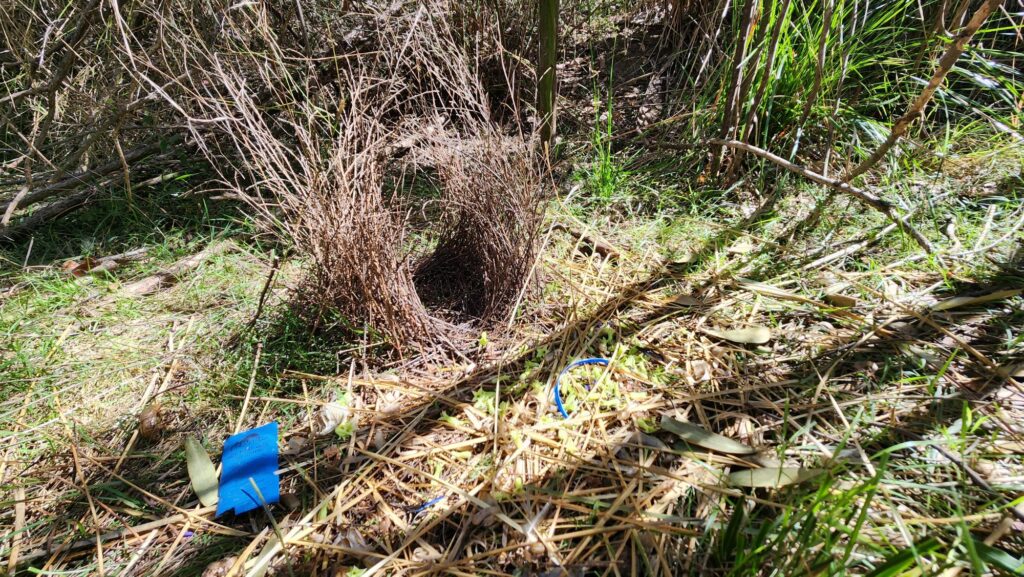Trash and treasure – The joy of finding a bower in the bush!
While out in the bush recently in Victoria, I came across this fantastic example of the handiwork of a male Satin Bowerbird… a bower, complete with an assortment of trash and treasure arranged in front of it!
As I haven’t come across one of these for some time, I thought it would be a good time for a refresher – so let’s learn a bit more about the Satin Bowerbird (thanks to the Birdlife Australia website).
Satin Bowerbirds are medium-sized birds, with the males renowned for decorating their bowers with all manner of blue objects collected from the vicinity of the bower and sometimes from farther afield. These odds and ends may comprise feathers from parrots, flowers, seed pods and fruits, butterfly wings and artificial items such as ball-point pens, matchboxes, string, marbles and pieces of glass. Occasionally objects of different colours, especially greenish-yellow, are also used where blue items are difficult to procure. These are carefully arranged around the bower to assist the male to attract a mate.
As you will see in the image above, it seems that naturally occurring blue objects are rare in the bush at the moment at this location, so a few artificial (plastic) blue objects are complemented by a large number of green/yellow flowers collected from the surrounding forest.
The breeding season runs from September to February, but the bower is meticulously maintained by its male owner throughout the year. Both mature and immature males build bowers and display to prospective females.
On the arrival of a female, the male Satin Bowerbird leaps into a ritualised display of exaggerated movements, such as strutting and bowing, with wings outstretched and quivering, and accompanied by a variety of mechanical-sounding calls, such as buzzing and rattling interspersed with mimicry. One of the bower decorations is usually carried in the male’s bill. If impressed, the female moves into the bower avenue for mating and then leaves to perform the nesting duties on her own, while the male readies himself for courting more prospective females.
Finally, thanks to some amazing video captured by Dan Proud, as shared on YouTube, you can see what the whole process and these fascinating birds look like – up close.
Enjoy the show!

